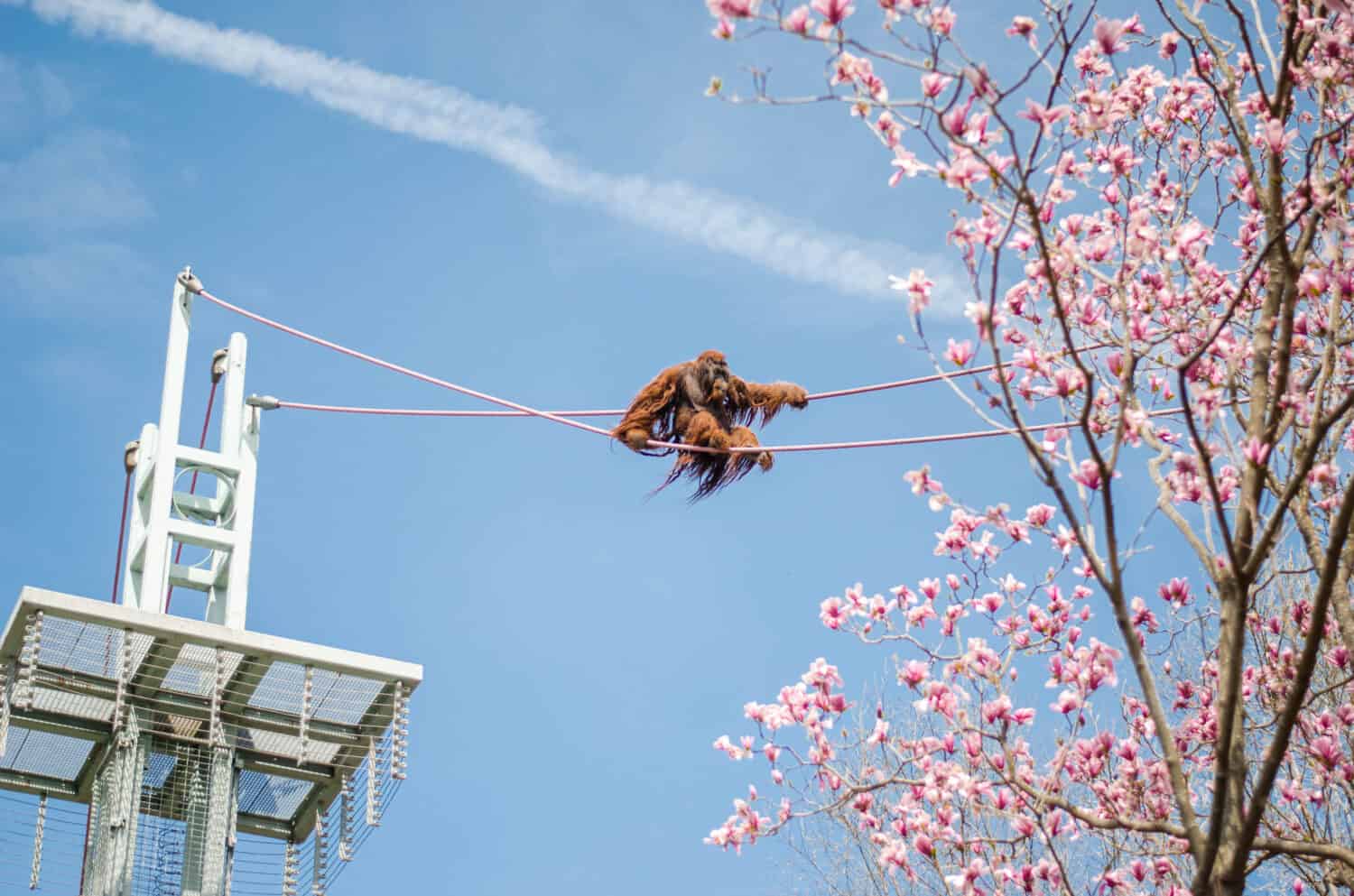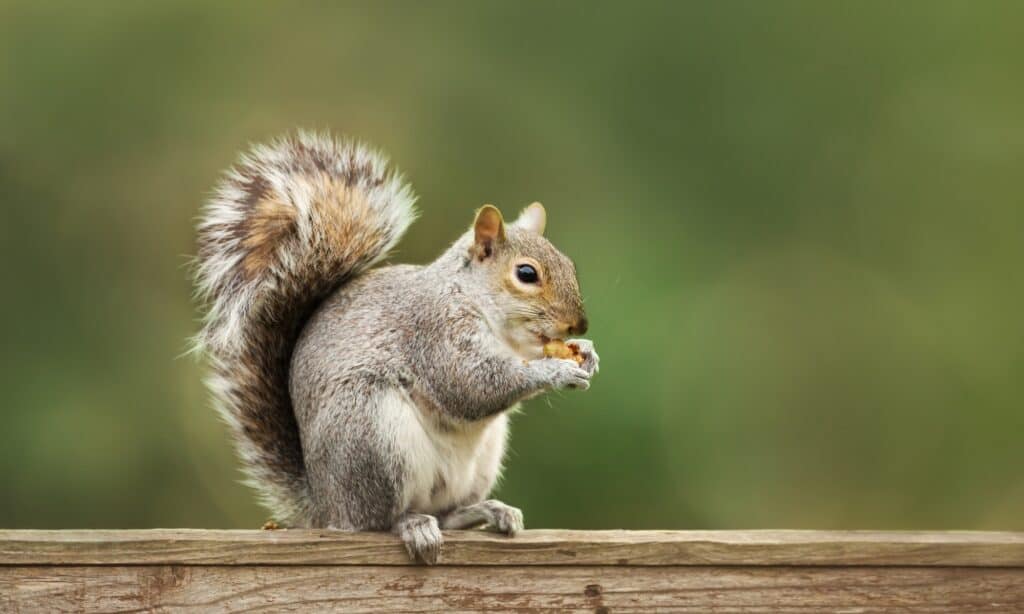Nestled along the banks of the Potomac River, Washington D.C. exudes an undeniable sense of grandeur and history. As the capital city of the United States, it is home to many historic monuments and iconic landmarks, like the White House and the Lincoln Memorial. However, did you know that this bustling cityscape is also home to some rather enchanting castles? Let’s take a closer look at three of the incredible castles in Washington D.C.!
1. Smithsonian Castle (1855)
When he died, the British scientist James Smithson left a large fortune to his nephew. However, Smithson asked that if his nephew had no heirs, he would use the money to create “an establishment for the increase and diffusion of knowledge”. Thus, the Smithsonian Institution was born. Today the institution consists of over 15 different museums, galleries, the National Zoo, and the Smithsonian Castle.
The first structure ever built for the Smithsonian Institute, the Smithsonian Castle is the oldest of the Smithsonian buildings, built over 150 years ago. The Smithsonian Building Committee held a nationwide design contest and unanimously choose the design submitted by James Renwick, Jr.
Renwick’s design was inspired by the Collegiate Gothic style in England with Romanesque motifs, with the intent to create a building that emulated the ideas of wisdom and knowledge. The Smithsonian Castle uses Seneca red sandstone from Maryland’s Seneca Quary, with exquisite woodwork and beautiful Victorian arches inside.
Located on the National Mall, the Smithsonian Castle opened to the public in 1855. Originally it was home to the entire institution. It included a natural history collection, a gallery, a laboratory, and even an apartment for the organization’s secretary. Today, it houses administrative offices and the Smithsonian Visitor Center. You can even see a cardboard model that Renwick used while designing the building in one of the galleries. The castle is also a designated National Historic Landmark.
Like all of the buildings and, museums, galleries, of the Smithsonian Institute, you can explore the Smithsonian Castle for free! However, the Smithsonian Castle was closed for major renovations on February 1, 2023, and will remain closed for the next five years. But you can check it out through the Smithsonian’s online virtual tour.

The Smithsonian was designed by James Renwick, Jr., who also designed St. Patrick’s Cathedral.
©Marco Rubino/Shutterstock.com
Wildlife Near the Smithsonian Castle
Located on the National Mall in Washington D.C., the Smithsonian Castle is surrounded by over 1,000 acres of beautiful landscapes and parks. Iconic Japanese cherry trees, along with thousands of other plants, shrubs, and other trees contribute to the incredible biodiversity of the area. The many pools, ornamental ponds, and rivers are home to different species of fish. The fish, in turn, provide food for local predators like red-tailed hawks, ospreys, and sometimes even bald eagles. During their spring and fall migrations, monarch butterflies also pass through the area. Visitors can also spot squirrels as they scurry through the trees, along with migratory songbirds and waterfowl.
And of course, in addition to the natural wildlife in the area, you can also visit the Smithsonian’s National Zoo. It’s just a 20-minute drive from the Smithsonian Castle! Free to the public, the Smithsonian’s National Zoo is home to over 400 different species and more than 2,100 animals. You can see critically endangered animals like black-and-white ruffed lemurs, Chinese alligators, gharials, red wolves, and western lowland gorillas. The zoo also hosts daily animal demos where you can see some of its residents up close. And of course, don’t forget about the adorable giant pandas!
In addition, the Smithsonian Castle has even been known to house owls within its stately towers! Back in the 1970s, the Smithsonian’s secretary, ornithologist S. Dylan Ripley, acquired trained barn owls from the National Zoological Park. He named them “Increase” and “Diffusion”, after the Smithsonian’s mission of “ the increase and diffusion of knowledge”. The owls lived in the west tower of the castle and raised three owlets in 1977.

When the weather is nice, orangutans at the Smithsonian’s National Zoo often climb along the O-Line.
©Manokhina Natalia/Shutterstock.com
2. Stewart’s Castle (1873)
Until the 1860s, the Dupont Circle neighborhood in Washington D.C. was mostly marshland, with only a few small houses. However, in 1871, the Board of Public Works decided to make some big improvements to the neighborhood. They paved the roads and added trees, fences, and several paths. One of the project’s developers was a senator from Nevada, William Morris Stewart. Although he was having his own financial struggles at the time, Stewart’s partners encouraged him to build a large house in Pacific Circle to help to increase the value of the area.
Adolf Cluss designed Stewart’s new estate, which took two years to construct from 1871 to 1873. The five-story, 19,000-square-foot castle was the largest and most extravagant in the neighborhood, costing somewhere between $80,000 and $100,000. With elements from the Victorian and Second Empire styles, the castle consisted of red bricks and a large stone turret.
Having spent nearly everything they had on the castle, the Stewarts hoped that it would increase property values and bring in more development to the area. However, due to the Long Depression of 1873 to 1879, another large house wouldn’t be built here until 1881.
Undaunted, the Stewarts hosted many parties at their new home, and Stewart’s Castle became a central hub for high society in Washington D.C. However, they ultimately could not sustain this luxurious lifestyle, and many people began calling the large house “Stewart’s Folly”. After only two years, the Stewarts were out of money and moved back to California. They left the estate with only a watchman and a few servants.
The Stewarts finally sold the castle to William A. Clark, a senator from Montana. Clark, however, never actually lived in the estate. In 1901, after it had stood in Washington D.C. for only 28 years, Clark demolished Stewart’s castle. Unfortunately, only photographs and other records of the castle’s grandeur remain.

The Chinese Legation rented Stewart’s Castle for a brief time before it was sold to Senator Clark.
©Frances Benjamin Johnston / Library of Congress (cph.3c09379) – Original / License
Wildlife Near Stewart’s Castle
Today, there is a PNC Bank building where Stewart’s Castle once stood, surrounded by busy city streets. There aren’t many large, wild animals in this densely populated area, but you can a few smaller ones adapted to urban living. At night, raccoons occasionally roam the area, and eastern box turtles have been spotted in some of the nearby parks and gardens. During the spring and fall, migrating warblers and wood thrushes are common throughout the neighborhood. Chimney swifts and big brown bats also make their homes in many of the neighborhood’s nooks and crannies, helping to control insect pests.

Eastern box turtles in Washington D.C. are legally protected.
©Mark_Kostich/Shutterstock.com
3. Castle Gatehouse (1899-1901)
The last enchanting castle on our list is an especially unique one. It is actually a pumping station that helps to move water for the Washington Aqueduct system! Back in the late 1890s, the Army Corps of Engineers built the castle and 4-mile-long tunnel underneath to help bring clean water to the people of Washington D.C. Previously, the city’s tap water was muddy, unfiltered, and full of bacteria, causing residents to suffer from frequent typhoid epidemics each summer.
In addition to helping the residents of Washington D.C., the Castle Gatehouse is extra special because of its unusual design. It was created from the medieval-styled castle on the 1893 logo or insignia of the Army Corps of Engineers! It has four tall turrets, along with several pointed arches, protective battlements, and crenelated parapets. The builders then covered the brick building with a special Portland cement plaster to mimic the look of castle stonework.
In 1901, after two years of construction, the Castle Gatehouse was completed. The Army Corps of Engineers also added a treatment plant to it in 1905, providing filtered and purified water to the people of Washington D.C.
Today, the Castle Gatehouse is actively used by the Army Corps of Engineers as it continues to bring clean water to residents in the area. It sits in the Palisades neighborhood of Washington D.C., surrounded by several lush trees right along the Georgetown Reservoir. You can contact the U.S. Army Corps of Engineers for tours.

The Castle Gatehouse is a National Historic Landmark and is in the National Register of Historic Places.
©Regine Poirier/Shutterstock.com
Wildlife Near the Castle Gatehouse
The Palisades neighborhood of Washington D.C. is relatively woody, so there is a wide variety of wildlife living around the Castle Gatehouse. Most common are many different species of birds living in the trees, such as blue jays, wood thrushes, robins, chickadees, and cardinals. In addition, you can spot many eastern gray squirrels. Opportunistic raccoons and Virginia opossums help to keep the area clean, while black rat snakes and red foxes help to control rodent populations.

Eastern gray squirrels are the most common type of
squirrel
in Washington D.C.
©iStock.com/Dgwildlife
Summary of 3 Enchanting Castles Nestled in Washington D.C.
| Name | Address | ||
|---|---|---|---|
| Smithsonian Castle | 1000 Jefferson Drive | The National Mall in the heart of Washington D.C. | 1855 |
| Stewart’s Castle | 1913 Massachusetts Avenue | Embassy Row and Dupont Circle Neighborhoods | 1873 |
| Castle Gatehouse | MacArthur Blvd. | Palisades Neighborhood | 1899 to 1901 |
Thank you for reading! Have some feedback for us? Contact the AZ Animals editorial team.







